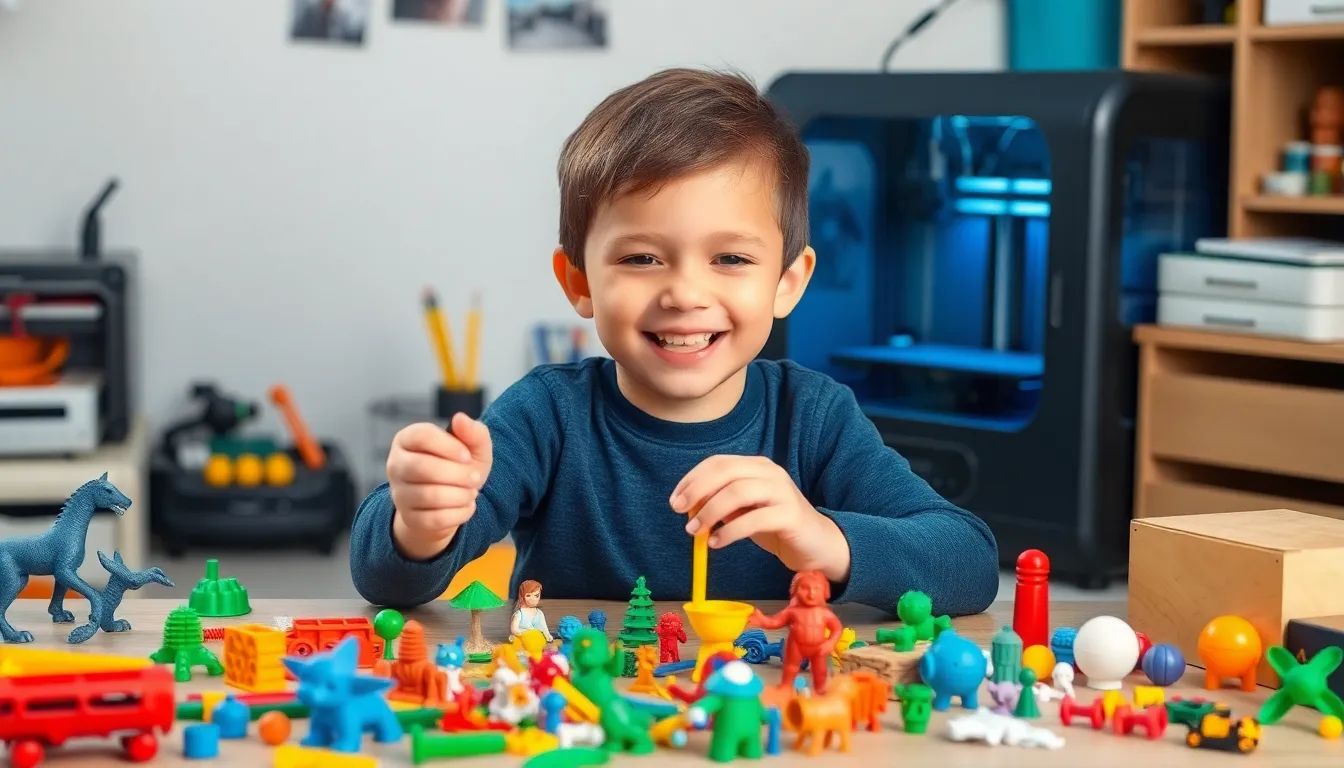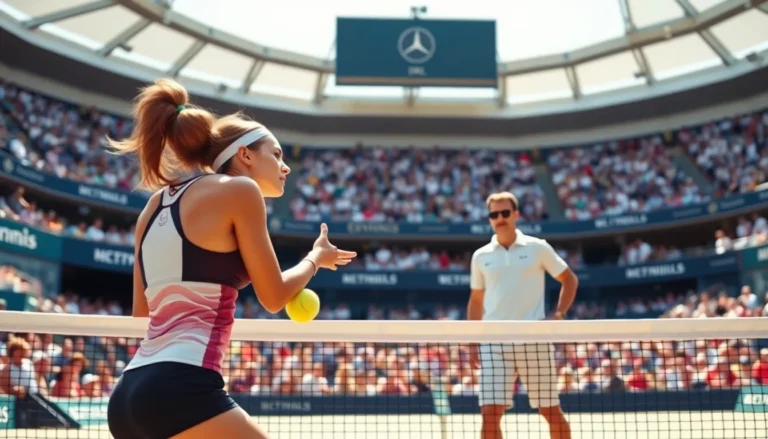Imagine a world where toys aren’t just bought off the shelf but crafted right before your eyes. 3D printed toys are making that dream a reality, transforming playtime into a creative adventure. With a sprinkle of imagination and a dash of technology, these customizable wonders are capturing the hearts of kids and adults alike.
Table of Contents
ToggleOverview of 3D Printed Toys
3D printed toys revolutionize the way individuals interact with playthings. Makers can produce unique designs, leading to a vast array of options tailored to personal preferences. Children enjoy building customized toys that reflect their interests and personalities. Adults often find satisfaction in creating intricate models for display or educational purposes.
Materials likePLA and ABS are commonly used in 3D printing, ensuring durability and safety for users. A variety of textures and colors become available, appealing to different age groups and tastes. Many online platforms offer downloadable designs, making it easy for anyone to start printing toys at home. The DIY nature of 3D printed toys fosters creativity and problem-solving skills.
Playtime transforms as families engage in collaborative design projects. Collaborative efforts often strengthen bonds while allowing for shared creativity. As more individuals explore 3D printing, the market for customized and interactive toys continues to grow. Educational benefits also emerge, as children learn about engineering and design principles through hands-on experience.
Environmental considerations come into play, as many 3D printed toys produce less waste than traditional manufacturing methods. With an increase in eco-friendly materials, consumers prioritize sustainability. Innovative advancements in technology provide ongoing opportunities for unique toy development. This blend of creativity, education, and sustainability solidifies the place of 3D printed toys in modern play.
Benefits of 3D Printed Toys

3D printed toys offer unique advantages that enhance playtime and learning for children and adults alike. These benefits include extensive customization options and significant educational value.
Customization Options
Endless customization options characterize 3D printed toys. Makers can modify designs to suit individual preferences, creating toys that reflect personal interests and styles. Children can choose colors, shapes, and features, allowing for personalized expressions of creativity. Unique designs become feasible, as families can engage in collaborative projects that result in one-of-a-kind creations. Many online platforms provide templates that inspire further customization, making this process accessible and enjoyable.
Educational Value
3D printed toys promote educational benefits that extend beyond simple play. Engaging with these toys allows children to grasp engineering and design concepts through hands-on experience. Creating toys encourages critical thinking and problem-solving skills, fostering an understanding of how things work. As kids navigate the design and printing process, they develop patience and resilience, preparing them for future challenges. Incorporating lessons in mathematics and technology into playtime provides a well-rounded educational experience.
Challenges in 3D Printing Toys
3D printing toys presents unique challenges impacting design and safety. Addressing these challenges ensures the quality and reliability of the final products.
Material Limitations
Material constraints hinder optimal toy production. PLA and ABS frequently serve as popular choices, yet each has specific limitations. PLA can exhibit brittleness and lower temperature resistance. ABS, while more durable, involves more complex printing processes. Certain designs may encounter difficulties due to material properties affecting flexibility and intricacy. The diverse range of materials, including PETG and TPU, enhance capabilities but complicate the selection process for makers. Understanding material characteristics influences final toy quality and playability.
Safety Concerns
Safety remains a crucial consideration in 3D printed toys. Contaminants during the printing process can compromise toy integrity and user health. Small parts pose choking hazards, particularly for younger children. Ensuring that materials comply with safety standards, such as ASTM or EN71, is vital for market acceptance. Testing toys before use guarantees they meet safety guidelines. Manufacturers face challenges when considering the absence of regulatory oversight in the 3D printing domain. Awareness of these factors aids consumers in making informed decisions about 3D printed toys.
Popular 3D Printed Toy Designs
Numerous designs in 3D printed toys cater to diverse interests. Action figures attract children who enjoy superheroes, while customizable dolls appeal to those interested in imaginative play. Building blocks foster creativity and allow endless combinations for kids of all ages. Educational kits featuring science experiments engage young minds in learning while playing.
Robotics kits challenge older children, encouraging them to assemble and program their creations. Model vehicles entice enthusiasts with intricate details and personalization options. Dinosaurs remain a favorite among kids, offering various stylized designs for collectors and young paleontologists.
Puzzles also gain popularity, with innovative shapes and complexity that promote problem-solving skills. Board games featuring unique tokens and components add a fresh twist to family game nights. Crafts and art supplies designed through 3D printing enhance creative exploration, giving kids tools for their artistic pursuits.
Toys based on popular media often see high demand, allowing for unique character representation. Sports-themed figures resonate with active children who enjoy imaginative play centered around their favorite athletes. These diverse toy designs provide countless possibilities for personalization and creativity, leaving lasting impressions on playtime experiences.
Interactive toys represent a growing trend, incorporating technology to create engaging play experiences. By combining traditional play with modern technology, manufacturers create toys that not only entertain but also educate. Frequent online platforms showcase designs enabling easy access for hobbyists and families wanting to try 3D printing at home. As interest in 3D printed toys expands, the variety of designs reflects the unique needs and preferences of users.
3D printed toys are reshaping the landscape of playtime by blending creativity with technology. They offer a unique opportunity for customization that appeals to both children and adults. This innovative approach not only enhances the play experience but also fosters essential skills like problem-solving and critical thinking.
As families engage in the design process together, they strengthen their bonds while exploring the educational aspects of engineering and design. With the growing emphasis on sustainability and eco-friendly materials, 3D printed toys are paving the way for a more responsible approach to play.
Despite the challenges associated with materials and safety, the potential for creativity and personalization remains vast. The future of play is undoubtedly exciting with 3D printed toys leading the charge.



